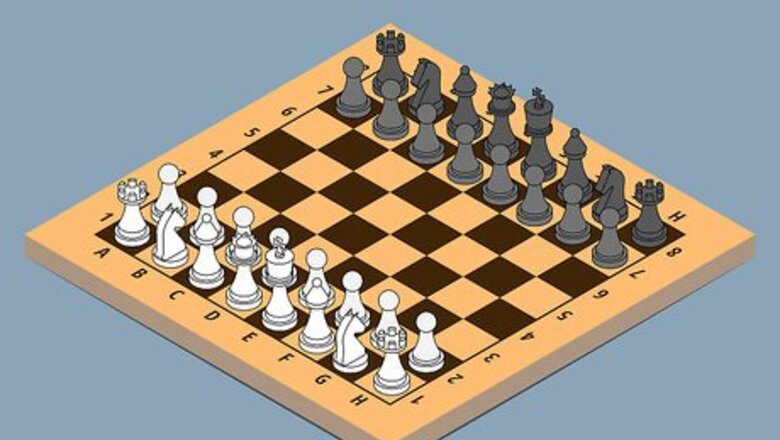
views
X
Research source
- Set up the board as you would for a normal chess game, then make the first move as the white pieces.
- Play the first move as the black pieces. Try to move your knights and bishops before you move your queen to better plan an attack.
- Alternate moving for both colors. Play the game as though you can't tell what the other color is doing, and try to win as both colors for a fair game.
Preparing to Play Yourself
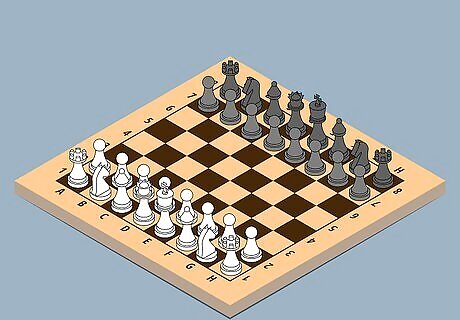
Set up the board. Solo chess is not a rapid game—it is a slow-moving logic battle against yourself. Since the game will be played over the course of a few days or weeks, set up the board in a convenient location that others will not disturb. Place all of the pieces in their respective positions. The back row of pieces is ordered from left to right as follows: rook, knight, bishop, queen, king, bishop, knight, and rook. The white queen must be placed on a white square, and the black queen must be placed on a black square. The front row of pieces contains eight pawns.
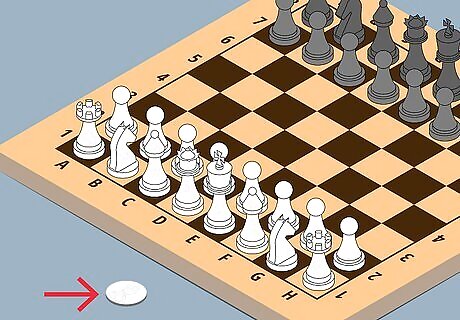
Find a token. Over the course of your solo game, you may find it difficult to keep track of whose turn it is. A small token, such as a coin or figurine, can help you keep track. Throughout the game, move the token from side to side to signify whose turn it is. You can also just turn the entire board around so that you look at the board from the other side.

Prepare yourself to remain unbiased. When you play yourself in chess, you are always aware of what your opponent—you—is thinking. It is tempting to use this advantage to skew the game towards one side or the other. Doing so, however, is not beneficial to your development as a player. In order to improve your skills through solo chess, you must remain indifferent about what side wins the game. Master chess players, while aware of their opponent’s strategy, always strive to make the best move possible.
Playing the Opening Game
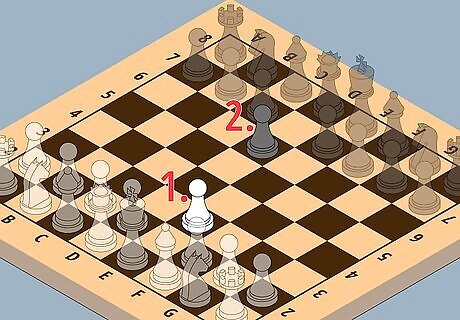
Make the first move for each side. Just as in traditional chess, the player with the white pieces always opens the game. Select a white pawn to move forward one to two spaces. Switch sides and select a black pawn to move forward one to two spaces. Try to avoid mirroring moves. Players generally move one of the pawns in front of the king or queen. This opens up a lane for the queen and bishops.

Anticipate your opponent’s moves. Prior to moving your pieces, always pause for a moment to think. Ask yourself several questions about your opponent’s strategy. “What is my opponent doing?” “How did my opponent’s last move impact the game?” “Is my opponent trying to set a trap?” After assessing the situation, formulate or adjust your strategy. First, search for moves that will threaten your opponent’s king or lead to the capture of one of their pieces. Second, determine if the move you want to make will leave your pieces vulnerable to capture. Lastly, double-check your evaluation.
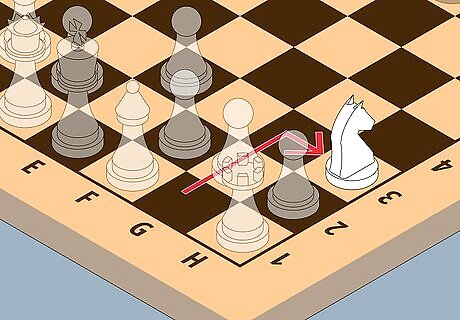
Move out the knights and bishops. Throughout the opening portion of the game, you want to position your pieces for future attacks. Prior to moving either queen, work to move the knights and bishops towards the center of the board. Doing so will put the knights and bishops in a position to attack your opponent’s pieces. Avoid moving too many of your pawns in an effort to capture the other player’s pawns.
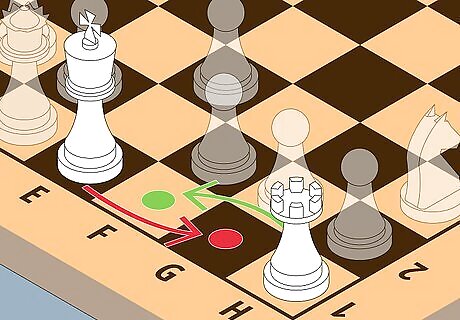
Castle. Castling is often the last action of your opening game. It is a move that relocates your king to a position of relative safety. In order to castle, all of the spaces between your unmoved king and an unmoved rook must be open. Slide your king two spaces towards the unmoved rook. Place the rook behind the king (between the king’s starting square and his new position). If your opponent fails to castle, look for an opportunity to capture their king.
Playing the Middlegame and Endgame
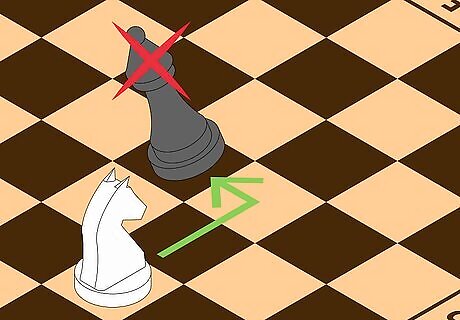
Attack your opponent. The middlegame is devoted to strategically attacking your opponent. During this portion of the game, you must remain patient and aware of your opponent’s strategy. If your opponent fails to protect a piece, consider seizing the opportunity to capture it. Before you capture the piece: Make sure you are not falling into a trap. Examine how the move will impact your pieces and the safety of your king.
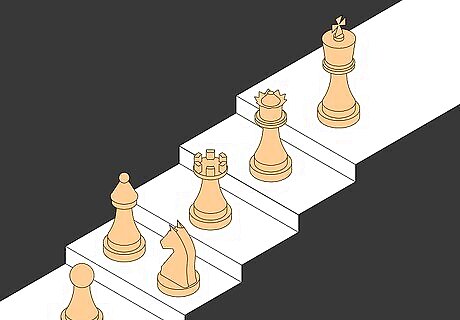
Cede your pieces wisely. During the middlegame, you and your opponent will inevitably capture each other’s pieces. Essentially, you will be swapping pieces with your opponent. While some swaps will be necessary and logical, others may be detrimental to the strength of your men and the safety of your king. Before swapping pieces, consider if the piece you are capturing is as valuable as the piece you are sacrificing. The queen is the most valuable piece, followed by the rooks. The bishops and knights are of equal value. Pawns have the least value to you.
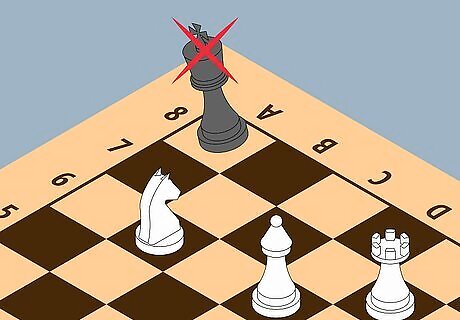
Capture the king. Once the manpower of each side has diminished, the endgame begins. Manipulate your pieces so that they threaten the safety of your opponent’s king. The goal of the endgame is to checkmate your opponent before they can checkmate you. When a king can not outrun a threat to its safety and the remaining men can not thwart the threat, the king is in checkmate.


















Comments
0 comment